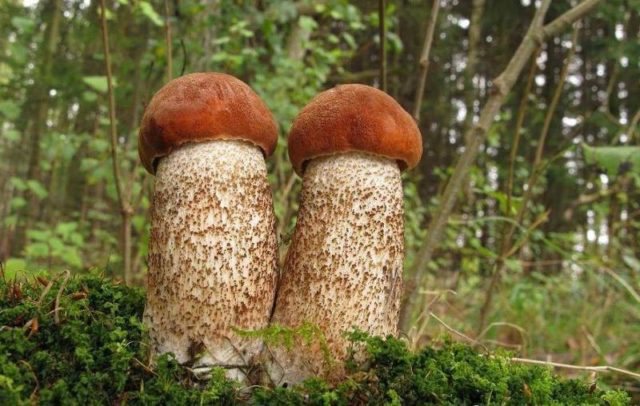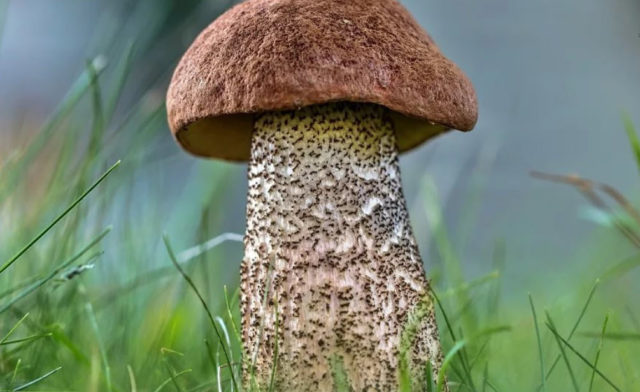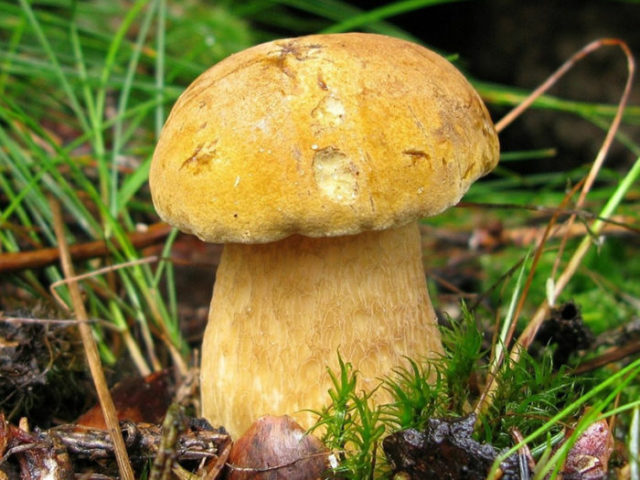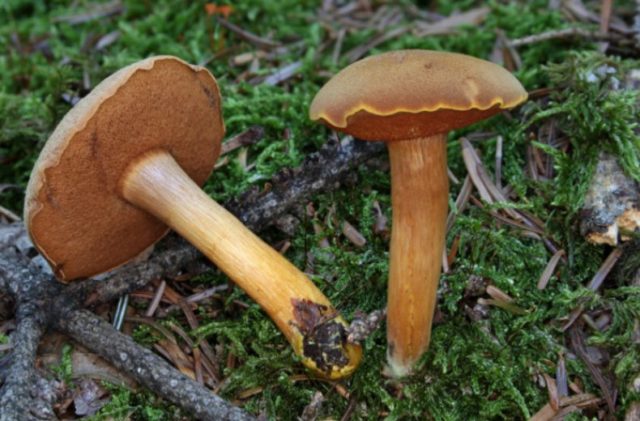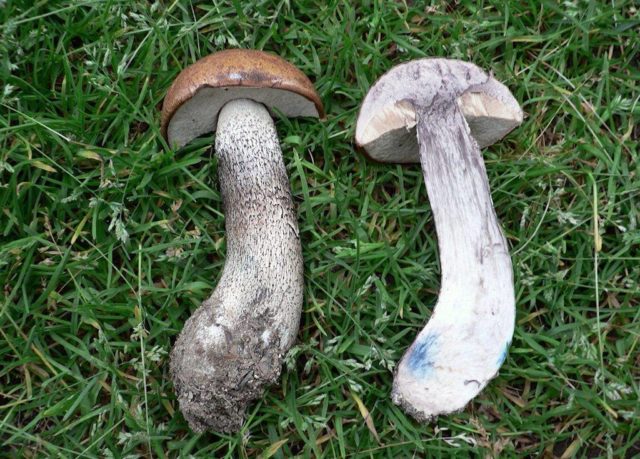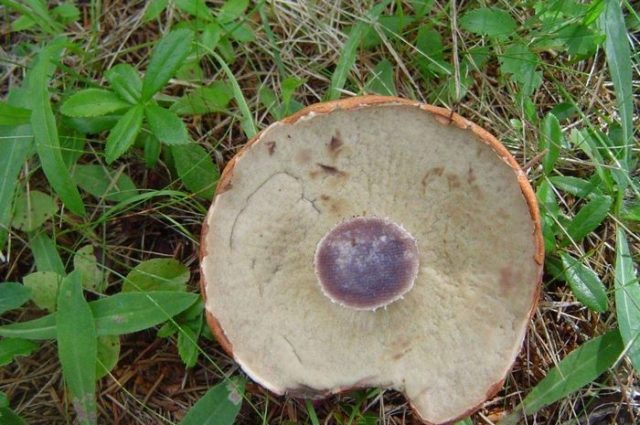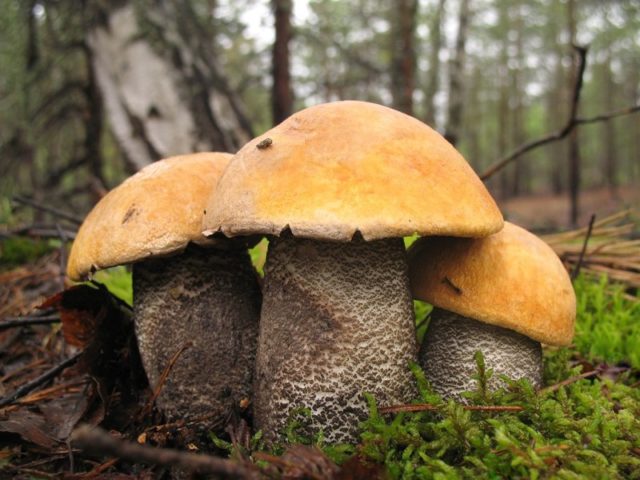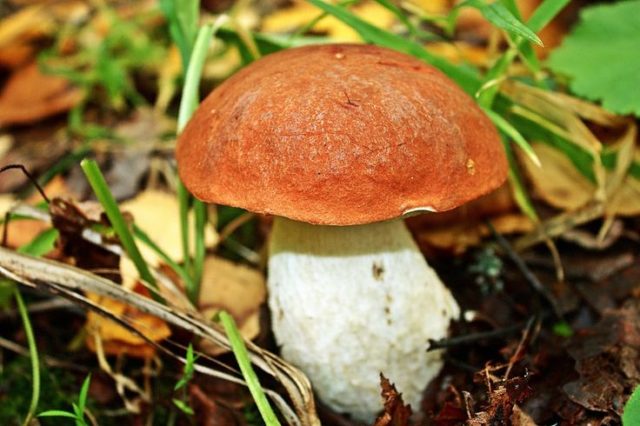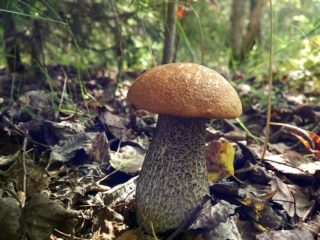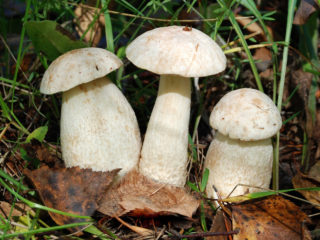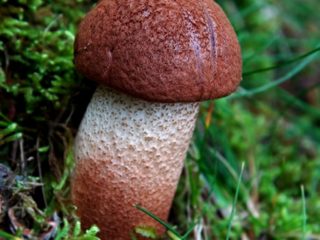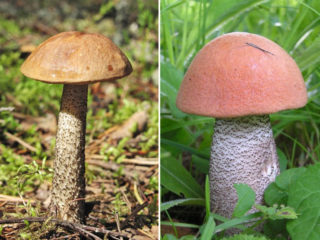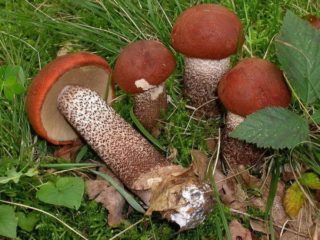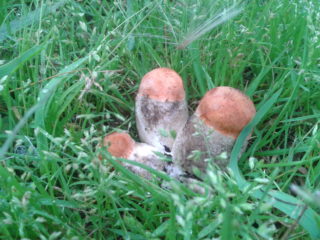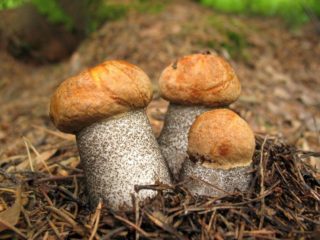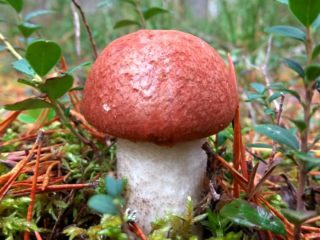Content
False boletus is a mushroom that is very similar to a real redhead in its external structure, but is not suitable for human consumption. This is usually called not one mushroom, but several varieties, in order not to bring inedible fruit bodies from the forest, it is necessary to carefully study the false twins.
Are there false boletus
Boletus, aspen, obabok or redhead is considered a unique mushroom that is almost impossible to confuse with other varieties. His appearance is very recognizable. The redhead does not have poisonous twins and belongs to the category of the safest.
But at the same time, it is still possible to confuse lumps with inedible fruit bodies, they do not pose a danger, but they have a very unpleasant taste. There is no specific mushroom called "false boletus" in nature. This word is used for other mushrooms that have their own names, but very much resemble the redhead in their external structure.
Varieties of false boletus
Most often, true aspen mushrooms are confused with several species - edible boletus and inedible gall and pepper mushrooms. In order not to make a mistake when collecting, you need to study in more detail the false and real boletus.
Boletus
Contrary to its name, boletus is found not only near birches, but also under other deciduous and even coniferous trees. The same applies to the boletus, so it is really easy to confuse them, especially since they belong to the same genus Obabkov.
The similarity between aspen and birch lies in their structure. Boletus boletus has a strong long leg about 15 cm in length, with a slight taper in the upper part, the leg is white in color and covered with dark scales. The cap of the fruiting body is dense and fleshy, at a young age it is hemispherical, convex, and in the adult it is similar to a pillow, with a tubular lower surface. By the color of the cap, the boletus double is usually light brown or dark brown, brownish yellow, olive brown.
The main difference between boletus and aspen is that the edible false redhead does not have a reddish tint in the color of the cap. But a real boletus has such a shade, it is not for nothing that it is called a redhead, it has a much brighter color. Also, the leg of the aspen tree is more even, cylindrical in shape and without tapering from above. When cut, the flesh of the false edible double turns slightly pink, and in the present aspen it acquires a bluish color.
Gall mushroom
Another false redhead is the famous bitterness, or gall mushroom, very similar in color and structure to several species from the Boletov family at once. It grows in the same places as obabok - in deciduous and coniferous forests, in symbiosis with pines, birches, aspens and other trees, near the trunks. The double can be found from June to early November, alone and in groups, all this makes it look like a redhead.
Real and false redheads are very similar in appearance. Gorchak also has a wide and dense fleshy cap with a tubular bottom layer, at a young age it is convex, and over time it becomes prostrate and cushion-shaped.The color of the skin on the cap can be yellowish-brown, dark brown, chestnut, the leg of the bitter pot is light - from yellowish to light ocher.
You can distinguish gorchak from a real aspen tree, first of all, by the leg. In a true aspen tree, it is covered with dark small scales, which are easily peeled off with a knife. In the photo of the false boletus mushroom, it can be seen that the leg of the bitterness is speckled with a "vascular" mesh, consisting not of scales, but of deep and wide stripes. Usually the double does not have a reddish tint in the color of the cap, and if you cut it in half, it will not turn blue, but turn pink.
Gorchak is not poisonous and not hazardous to health. But it cannot be used for food, since its flesh is unbearably bitter. Neither steeping nor boiling will eliminate this feature. If it accidentally gets into a soup or roast, bitterness simply spoils the dish and makes it inedible.
Pepper mushroom
This mushroom, similar to the boletus, also belongs to the Boletov family, but is inedible. It is similar in structure and color to obabok. Pepper fungus is characterized by a low cylindrical stem, even or slightly curved. The cap is cushion-shaped in adults and convex in young fruiting bodies, copper-red, dark orange or reddish-brown in color. Its surface is smooth, dry and slightly velvety, and on the underside it is covered with small rusty-brown tubes.
Like the redhead, the twin often grows under birch, aspen and pine trees in mixed and coniferous forests, prefers dry places, and bears fruit most actively from July to October. This increases the risk of confusing it with a true boletus.
Meanwhile, there are quite a few differences from the redhead in the false double. First of all, a pepper mushroom is usually smaller in size - its leg rises only up to 8 cm above the ground, and the diameter of the cap, even in adulthood, rarely exceeds 6 cm.
Also, there are no scales on the leg of the false boletus, its color is uniform, almost the same as that of the cap, but it may be slightly lighter.
A false redhead is easy to recognize if you cut its cap. The flesh of the pepper mushroom will turn out to be yellow-brown and turn red on the cut, a faint peppery smell will come from it. If you taste the pulp, it will be very hot and pungent.
Pepper mushroom poses no health hazard when consumed once. Opinions about the edibility of the false boletus are divided - some mushroom pickers consider it inedible, others refer to the conditionally edible fruit bodies. The problem is that pepper mushrooms taste too hot and can ruin any dish.
How to distinguish boletus from false mushrooms
If you properly study the features of the boletus and photographs of its counterparts, then you can deduce several basic signs of false boletus.
The true redhead has a high, dense and light-colored leg, covered with recognizable gray scales. A real aspen tree should not have a yellowish or reddish mesh, or "vessels", these are signs of false twins.
If you break the redhead in half, then its flesh will remain white or slowly take on a blue or black tint. If the mushroom looks like a boletus and turns pink or red on the cut, then this is a double.
The raw pulp of true aspen has a neutral taste and does not bring any unpleasant sensations. Inedible counterparts taste bitter or pungent, there is no desire to eat them.
In size, a real boletus is quite large - about 15 cm in height and the same cap in diameter. Some of the twins, such as the pepper mushroom, are much smaller in size.
Tips and tricks from experienced mushroom pickers
Experienced mushroom pickers, aware of the smallest nuances and differences between a true boletus and a false one, give newcomers a few more tips:
- When collecting, you should not rely solely on the shade of the cap. Depending on age, growing conditions and even lighting in the forest, false boletus may have a reddish skin color, but in a true redhead, the characteristic shade may be subtle. It is better to look at the differences in structure and at the cut flesh.
- Although false redheads have an unpleasant scent, it is not always clearly perceptible. To make sure that the fruiting body is inedible, it is better to lightly lick its pulp. Since the doubles are not poisonous, this will not bring harm, but will clarify the situation.
Mushroom pickers also note that bitter or pungent false boletuses usually look much more attractive than true redheads. They are distinguished by straight caps and legs, untouched by insects, and make you want to cut them off and put them in a basket. However, midges and worms do not eat false stubs precisely because their flesh is too bitter, but the edible redhead is of interest to both humans and insects.
Conclusion
Boletus boletus is an edible or unusable mushroom that can be easily confused with a real boletus. There are few such varieties, all of them are well studied. It is important to emphasize that the redhead has no truly toxic twins.
